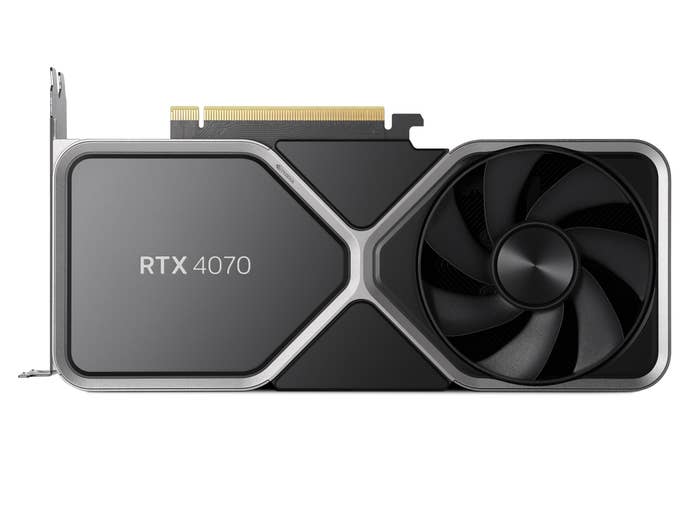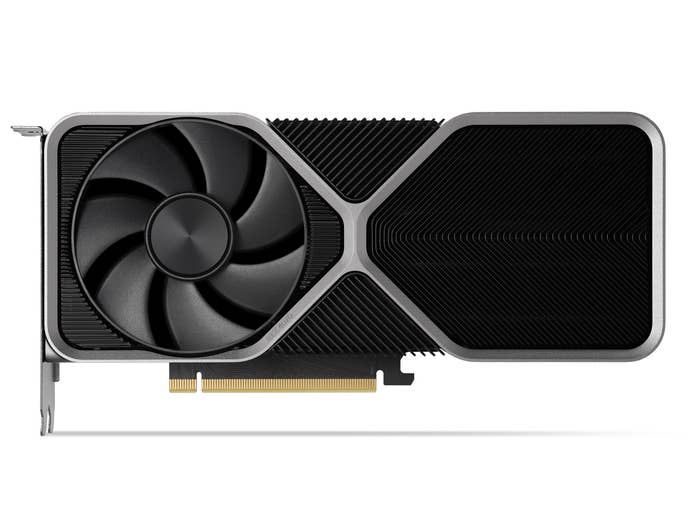The range of Nvidia 40-series GPUs increased this week GeForce RTX 4070 – The most affordable card in the series, but comes with some important benefits as an upgrade over previous generations. But how well does it stack up, and what is its value? We’re here to find out.
In the real world, we’re in the middle of a crazy inflationary bonanza, and it’s impossible to responsibly review this extremely decadent piece of wonderful gaming hardware without at least considering where it might eat into people’s budgets. So let’s start there, the 4070’s role is currently the cheapest entry point into Nvidia’s hot new 40-series GPUs.
At $599/£589, the 4070 is undoubtedly still expensive. It continues the trend of the 40-series, which makes their pricing perhaps a bit too optimistic for something that would make them a “must-have” card. Drop $50 off that price, and it’s a steal; drop it by around $100, and it’s an absolute must-have. As it stands, it’s enticing and largely justifies its price point — especially when you factor in the price structure of the entire range. But I do wish it was lower.
As discussed earlier about these cards, a lot depends on where you put your priorities. How exactly do you measure the value for money of these cards? Traditionally, you’d do this by comparing the frame rates you can achieve and the price you pay by comparing other available options from Nvidia and its competitors like AMD. However, the water is now cloudy. Many new features that significantly change the gaming experience, such as Reflex and DLSS, and similar products from other companies, are a major part of the decision-making process.
In the grander pantheon, the RTX 4070 rivals the previous-gen RTX 3080 in performance. The 3080 came out two and a half years ago for $699; so for $100 less, you can now get roughly the same level of performance as the card you started with. Plus, you can take advantage of the Series 40’s Ada Lovelace architecture, which unlocks DLSS 3.
The most interesting advantage, however, is the difference in power consumption between the two. Ada is much more efficient than its predecessor Ampere – so if you put the two head-to-head in the same game, you’d see similar gaming performance, but the 3070 draws over 50% more power than The 4070 is even better. This is a key component of this generational leap; power consumption is down. Of course, this brings us back to the status quo factor in the world. Since electricity costs are high, this is a nice advantage for a new card if you can afford the initial cost.
so. Let’s talk about those frame rates. To be clear, this isn’t primarily a 4K resolution card. The sweet spot here is 1440p and below, which is very useful at this price point. Chances are, if you’re ready to buy a massive 4K PC monitor, you’re also willing to spend a lot of money on a GPU like the 4090 or 4080.
At lower resolutions, the 4070 performs quite well, which is clearly where Nvidia sees the card in the market. To reflect this, the benchmarks briefly presented here are at 1440p, with settings typically maxed out. In the meantime, if you choose to buy this card and crank it for 4K, you’ll still get decent results – but our advice is to save for longer and pick one of those cards designed to be a 4K beast.
Forza is our classic benchmark on the iGamesNews, and Forza Horizon 5 paints a pretty clear picture of where the 4070 fits in the grand scheme of things. At the same settings, the 4070 is a slight 10% increase over the 3080, with a frame rate just above 120fps. Th is is without enabling the new implementation of DLSS 3 (which lets you push things further). Jumping over to Hitman 3, another general benchm ark game, we see the 4070 and 3080 neck-and-neck, delivering an experience just shy of 60fps with all ray tracing enabled.
However, this doesn’t always match. If we head to Metro Exodus we can see that the 3080 is slightly ahead, although it’s a pretty close fight and the postcard manages 60 pretty well. Control is a game that really puts pressure on the ray tracing enabled GPU, where we saw the 3080 actually take the lead.
Did you notice the theme here? Nvidia’s stated goal was to match the 3080…and the 4070 does just that. It does what they claim. This has an odd consequence: I wouldn’t recommend the 4070 as an upgrade for any owner of a 30-series card. The leap wasn’t big enough. But if you have an earlier generation than that (20 series and below), this is suddenly the most affordable card with an absolutely huge boost.
Going back to the killer, for example, on almost all but the top-of-the-line 20-series cards, you can jump from a slump around 30fps or below to a near-steady 60fps on the 4070. Metro was a similar story, from the low 40s until the mid 70s. Single-generational leaps were not important at the time, but leaps between two generations were notable. If external comparisons were to be made, the 4070 would also wipe the floor with any current-generation console. It’s not even a game.
How does it compare to Nvidia’s sworn enemy, AMD? As it stands, AMD has yet to release a current-generation graphics card in this price range. So this could be the main battleground in the coming year. However, it’s worth noting that discounted AMD Radeon 6950 XT cards can cost a little more than the 4070 if you shop around. In this debate, however, Nvidia’s X-factor remains its software and other features. Although AMD has Nvidia’s versions of Broadcast, DLSS, and Reflex, Nvidia is clearly the market leader for these features.
DLSS in particular is a game changer, and with DLSS 3, exclusive to 40-series cards, the 4070 is now the easiest way to make the leap. If you can choose between a discounted 3080 (which seems unlikely; their prices hold up well) and a 4070, that should be the deciding factor. DLSS 3 will be used by more games in the future, and in the few titles currently supported, it will play a huge role and be worth the extra investment.
We also don’t have a crystal ball into AMD’s future offerings, so for those of you with older-generation cards who are starting to feel the pressure of age, the 4070 feels like a compelling upgrade and the most affordable.
In recent years, Nvidia has released products that take some hair-raising leaps forward. The 4070 is not like that. In its place is a belt card that matches the higher-tier offerings of the previous generation at a lower price and higher efficiency. It’s the closest thing to a midrange 40-series card, and a strong entry point for this generation. This works for us, and it should be the staple card of this generation of hardware. I just wish the prices had dropped a bit across the board.










